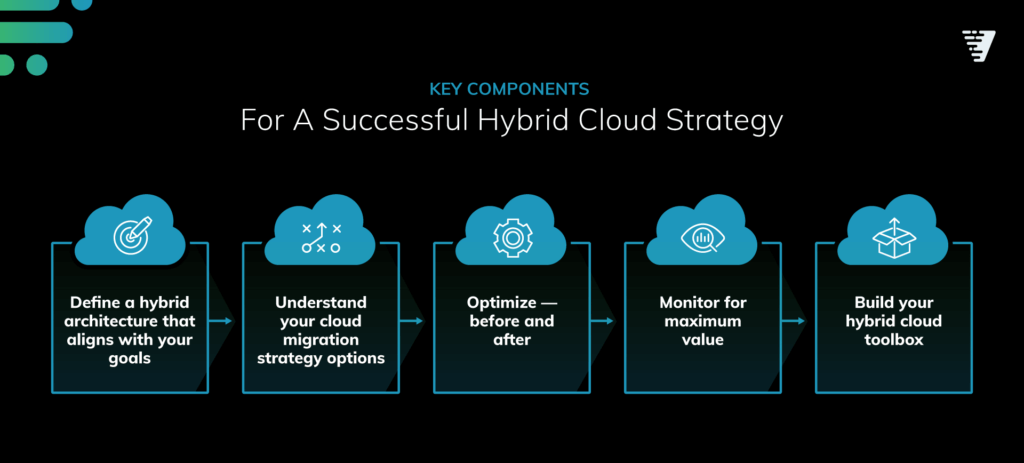Cloud computing is a foundational platform for modern businesses, enabling digital transformation and supporting organizational agility. The benefits of putting applications in the cloud are well documented: flexibility, scalability, and reliability with a lower capex investment.
But as with anything in life and technology, there are trade-offs. You lose some control over your data, and you could face increasing opex costs over time. Data security is also a consideration, but there are pros and cons on both sides. For some companies, especially those in regulated industries or that manage highly sensitive data, handing over control of that data to a cloud provider might not align with their risk profile. On the other hand, the major public cloud providers have invested in dedicated teams and controls to provide a level of security some companies, especially smaller organizations, could never achieve on their own.
In reality, there are very few companies that can realistically deploy 100% in the cloud. This means that for the vast majority, hybrid cloud computing is the best approach.
What is Hybrid Cloud?
Hybrid cloud is exactly what it sounds like: a computing environment that uses a mix of on-premises and cloud—third-party private and public—services. In other words, some of your workloads and/or components are moved into the cloud while others are kept internally. The key is to know which goes where—and why.
Hybrid Cloud Examples
There are probably as many variations of hybrid cloud as there are applications. Any horizontally scalable application components—think web or application services—are prime candidates for the cloud. This enables them to expand as required—and you pay for them as needed. But other components are better suited to remain on-premises. Here are just a few examples of different drivers for hybrid cloud deployment:
- Data sensitivity: If you want to maintain control over your data without having to manage new exposure points, you may want to keep the back-end data on-premises to maintain control.
- Data volume: If your data set is massive, or is fast-growing, you may want to keep it on-premises to contain costs.
- Transaction speeds: If your application demands ultra-fast processing, you may want to keep the back-end data on-premises to preserve performance.
- Legacy code stability: If your back end is a mainframe, you may want to keep the mission-critical legacy code on-premises to avoid the costs of rearchitecting—and potentially breaking—functionality.
Key Components for a Successful Hybrid Cloud Strategy

Hybrid Architecture that Aligns with Your Goals
Defining your hybrid cloud architecture requires you to make a lot of decisions, such as cloud deployment model (IaaS, PaaS, SaaS), cloud OS, security controls, network topologies, and even your own teams’ skills and capacity, to name just a few. Often, the right choice isn’t obvious—you will need to make trade-offs. Having a clear set of cloud migration objectives and priorities will provide guideposts to help you make the best hybrid architecture decisions for your business. Are you primarily looking to reduce costs, enable business transformation, improve the customer experience, or increase operational agility? What are the specific requirements you need to achieve those goals? Which workloads are mission-critical? Which present the biggest opportunity for business value? How suitable are they for migration? What resources—budgetary and human—are available? Hybrid cloud isn’t the goal; it’s the means to your goal, but only if you architect it smartly. And to do that, you need to first answer these questions.
Migration to a Hybrid Cloud Infrastructure
Determining your hybrid cloud configuration is just one important step in your hybrid cloud strategy. You also need to figure out the best way to make it happen. Migrating cloud workloads can be challenging, and mistakes can lead to performance issues, unnecessary costs, and other problems. Here, too, you have multiple cloud migration strategy options available to you, including lift-and-shift, extend to the cloud, cloud-optimized, and others.
Hybrid Cloud Optimization—Before and After
A common approach is to make the best decisions you can pre-migration, then when workloads have been moved, you optimize based on actual behavior. In fact, you can optimize before migrating—get a solid cloud preview before things are set in stone, if you will—so you can adjust your plan before committing to it. And, of course, businesses are constantly evolving, which means things will change post-migration. You need the ability to analyze, manage, and optimize your cloud costs on an ongoing basis to avoid nasty surprises in your cloud bill.
Ongoing Hybrid Cloud Monitoring for Maximum Value
Beyond cost containment, you also need hybrid cloud monitoring that provides deep visibility to ensure ongoing performance and support planning without adding unnecessary costs. For example, instead of over-allocating resources as a failsafe for meeting SLAs, you can identify shifts in performance in real time to eliminate bottlenecks. Or instead of over-provisioning to give you capacity breathing room, you can assess your exact resource needs based on real-time data.
Hybrid Cloud Solutions to Have in Your Toolbox
No hybrid cloud strategy is complete without identifying the tools you need to plan and execute effectively. Here are some key capabilities you want to have in arsenal:
- Quickly identify and resolve problems
- Balance and optimize the infrastructure for workload, capacity, and cost
- Understand the impacts of application interdependencies
- Benchmark and right-size across all computing dimensions
- Monitor health and performance metrics in real time
Virtana: Your Hybrid Cloud Partner
When you work with Virtana, you can take control of your infrastructure, transform your cloud operations, and deliver a superior brand experience. Take control of your hybrid infrastructure with Virtana Platform to support agility while guaranteeing performance, minimizing risk, and reducing cost. Try it for free

James Bettencourt




